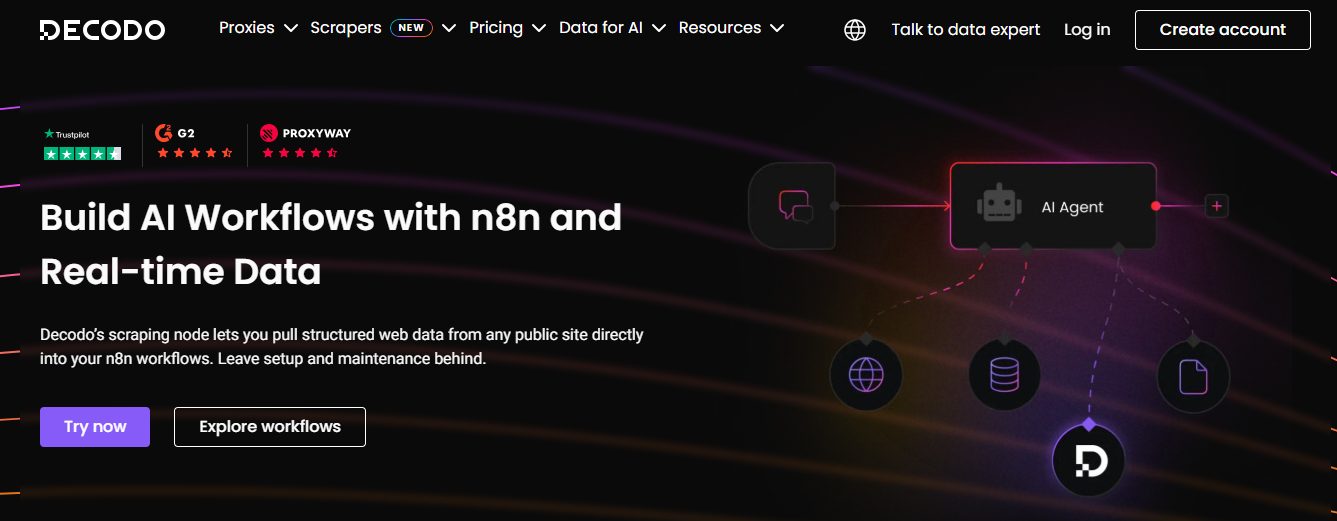In this post, I will talk about brand protection and fraud monitoring with public data.
Brand impersonation, counterfeit products, and phishing campaigns pose existential threats to modern companies. A single convincing fake website can damage customer trust built over decades, while counterfeit products on major marketplaces can undermine revenue and brand integrity.
The challenge isn’t just detecting these threats—it’s coordinating effective responses across marketing, security, and legal teams without overstepping legal boundaries or compromising operational efficiency.
Table of Contents
The Cross-Team Collaboration Challenge
Brand protection requires expertise from multiple departments, each with distinct responsibilities and constraints:
Marketing teams need to monitor brand mentions, unauthorized logo usage, and misleading campaigns across social platforms and websites. They understand brand guidelines but lack technical tools for large-scale monitoring.
Security teams focus on phishing kits, malicious domains, and technical attack vectors that could compromise customers or company infrastructure. They have technical expertise but may lack context about brand nuances and legal implications.
Legal teams require evidence collection, takedown coordination, and compliance oversight. They need detailed documentation but often work with limited technical resources and tight response timelines.
The traditional approach creates silos: marketing manually searches social platforms, security teams use specialized threat intelligence tools, and legal teams work from incomplete information.
This fragmentation leads to delayed responses, duplicated efforts, and missed threats that operate across multiple vectors simultaneously.
Automated Cross-Team Workflows with n8n
Decodo’s n8n workflow integration transforms brand protection from reactive manual processes into proactive automated systems that serve all three teams simultaneously.
The platform’s 125+ million IP pool across 195+ locations enables comprehensive monitoring without triggering detection systems that could limit data collection effectiveness.
Marketing: Brand Mention and Misuse Detection
Marketing teams leverage automated workflows to monitor trademark violations and unauthorized brand asset usage across e-commerce platforms, social media, and websites.
Using n8n’s visual workflow builder, teams configure monitoring processes that track brand mentions, logo appearances, and promotional campaigns that might constitute trademark infringement.
The system automatically identifies suspicious product listings on Amazon and eBay that use company trademarks without authorization, monitors social media platforms for accounts impersonating official brand presence, and tracks competitor campaigns that might create brand confusion or dilute market positioning.
Scheduled monitoring: Workflows run on hourly, daily, or custom cron schedules, ensuring continuous brand protection without manual intervention. Email and webhook notifications immediately alert marketing teams when potential violations are detected.
Security: Phishing and Impersonation Detection
Security teams use the platform to monitor phishing infrastructure, malicious domains, and impersonation websites that could compromise customer security.
Automated workflows scan domain registrations for brand-related keywords, monitor underground forums for phishing kit discussions, and track technical indicators of malicious impersonation campaigns.
The Model Context Protocol (MCP) integration enables AI-enhanced threat analysis, where collected intelligence flows directly into large language models for immediate threat assessment, campaign attribution, and risk prioritization.
Security teams receive structured alerts that include technical details, threat severity assessments, and recommended response actions.
Legal: Evidence Collection and Takedown Coordination
Legal teams benefit from automated evidence collection that meets documentation standards required for takedown requests and legal proceedings.
Workflows automatically capture screenshots, preserve webpage content, and document trademark violations with timestamps and technical metadata.
Collaborative Workflow Examples
Comprehensive Phishing Campaign Response
When security monitoring detects a suspicious domain using company trademarks, automated workflows trigger multi-team collaboration:
- Initial detection: Security workflows identify suspicious domain registration using brand keywords
- Brand analysis: Marketing workflows assess trademark infringement and brand confusion potential
- Legal documentation: Evidence collection workflows capture domain details, website content, and trademark usage patterns
- Response coordination: webhook integrations notify all teams simultaneously with role-specific information and recommended actions
E-commerce Counterfeit Monitoring
Marketing and legal teams collaborate on marketplace protection through automated workflows that:
- Product monitoring: scan Amazon, eBay, and regional marketplaces for unauthorized product listings using company trademarks
- Seller analysis: investigate seller profiles, feedback patterns, and listing histories to identify systematic counterfeiters
- Evidence compilation: automatically document violations with product images, seller details, and trademark usage for takedown requests
- Progress tracking: monitor takedown request status and identify sellers who migrate between platforms
Avoiding Legal Overreach
Decodo’s platform includes built-in safeguards that help teams maintain legal compliance while conducting brand protection activities:
Public data focus: all monitoring activities target publicly available information, avoiding privacy violations or unauthorized data access that could compromise legal positioning.
Automated compliance checks: the platform’s KYC processes and fraud prevention systems ensure that monitoring activities align with legal standards and data protection regulations.
Role-rased access: dashboard team management enables precise control over who can access specific features
Geographic Scope and Network Coverage
Modern brand protection requires global monitoring capabilities. Decodo’s residential, ISP, datacenter, and mobile proxy networks enable teams to monitor brand usage across different geographic regions and platforms:
Regional monitoring: track trademark violations and brand misuse in specific markets where companies operate, ensuring comprehensive protection across international operations.
Platform-specific access: mobile proxies enable monitoring of mobile-specific platforms and applications where brand impersonation increasingly occurs.
Cost-effective scaling: ISP proxies make large-scale monitoring economically viable for comprehensive global brand protection programs.
Conclusion
Decodo’s n8n-powered automation and MCP integration turn fragmented, manual brand protection into a unified, compliant, and scalable defense system. Businesses can automate their marketing and security operations and complete their tasks within minutes.
INTERESTING POSTS
- Preventing Cyber Attacks with Domain Protection and Threat Takedown Solutions
- OnlyFans DMCA Takedown – How To Handle Copyright Removals As A Creator
- The Intersection of AI and Privacy: Safeguarding Personal Information in the Age of Intelligent Systems
- How Companies Leverage Decodo’s n8n and MCP Platform: Streamlining Business Intelligence and Operational Automation
- How Will The Right CRM System Improve Your Business Today?
- 20 Most Popular eBay Scams [+Prevention Methods]
About the Author:
Daniel Segun is the Founder and CEO of SecureBlitz Cybersecurity Media, with a background in Computer Science and Digital Marketing. When not writing, he's probably busy designing graphics or developing websites.









